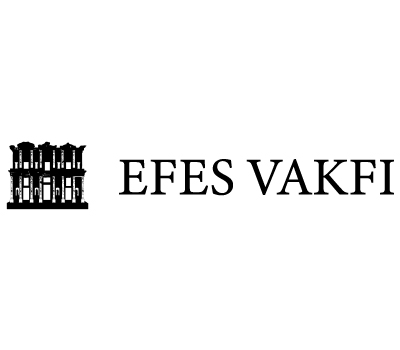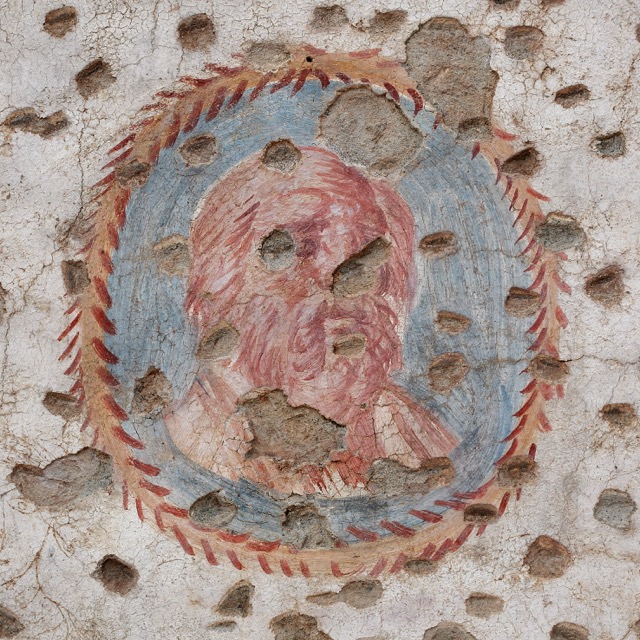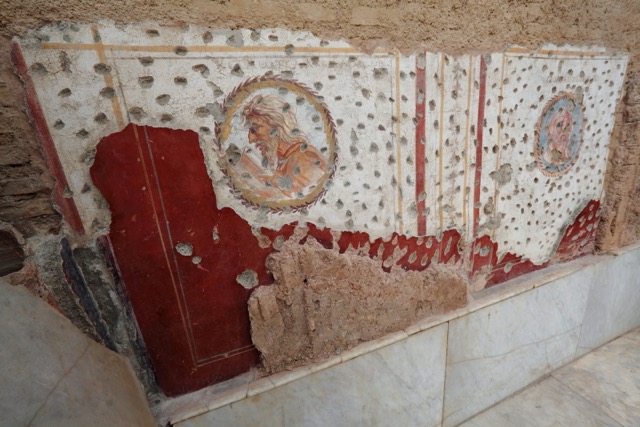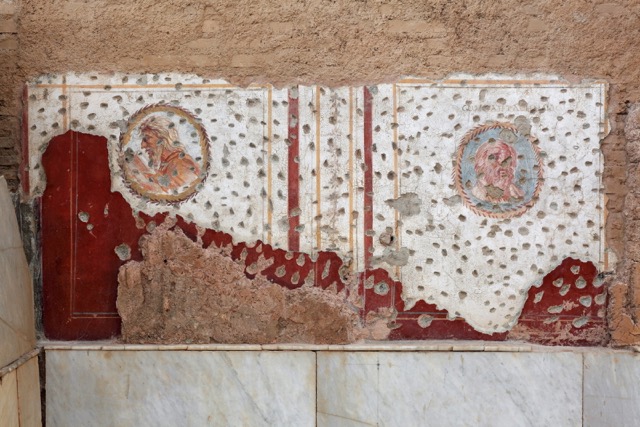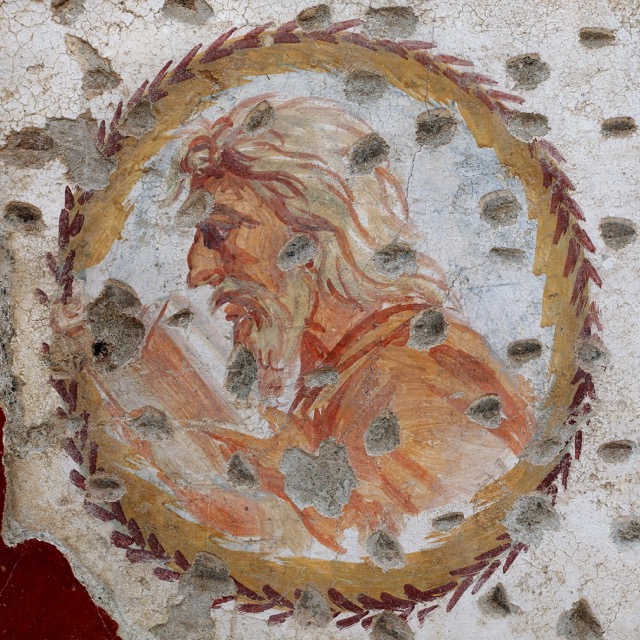Philosopher’s Court 24
The Philosopher’s Room consists of a courtyard surrounded by six columns with guild capitals, covering an area of 64 square meters. It is enclosed by corridors on three sides and opens to a large reception room from the south. This room is almost entirely covered with marble slabs. The corridor extending from the courtyard to the entrance served as the communication center of the house and as a reception area for guests.
The wall decoration has three arrangement stages. The oldest painting layer, preserved only on the east wall, has been influential in the emergence of the name “Philosopher’s Room”: two areas framed in red in the first plaster layer symbolize the philosopher Socrates and Cheilon, one of the Seven Sages. A lisene (vertical rectangular ornamentation area) is placed between the areas. It is assumed that the lost wall decoration showed symbols of the other six members of the Seven Sages. Later, this layer was chosen to be covered with white marble slabs, forming the third and final surface layer. The socle area in the second layer is decorated with white paneled zigzag ornamentation on a black background. On the west wall, the remaining part of a type of parrot specific to Asia is found. The bird perfectly matches the paintings of the bird rooms SR 15 and SR 26-27. In the final construction phase (around 230 AD), the peristyle courtyard was completely covered with marble slabs, covering the paintings entirely. Therefore, the older painted layer was used to remove the plaster for fixing the slabs. Marble reliefs are still preserved in the socle area of the north and west walls.
Sponsors

